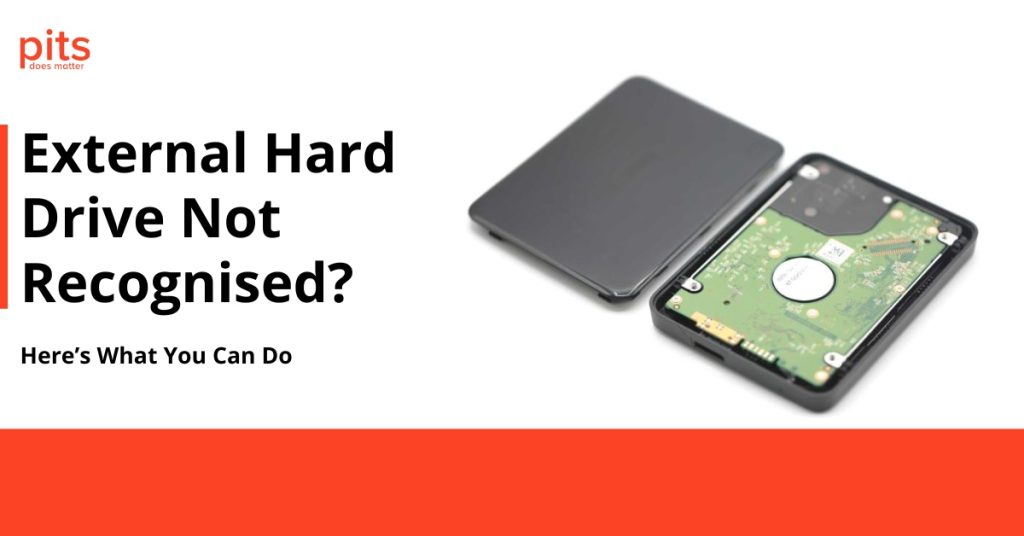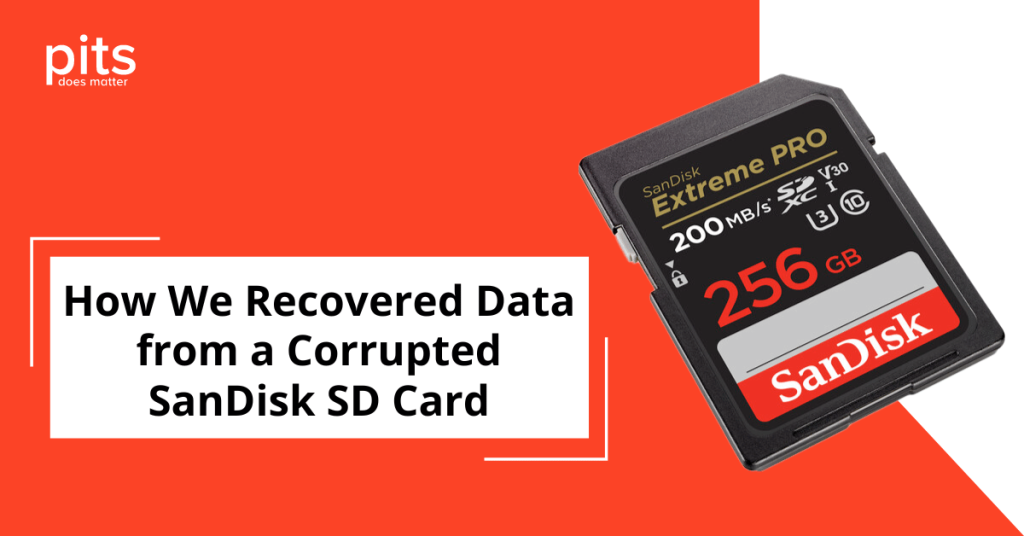In the dynamic realm of technology, solid-state drives (SSDs) have emerged as a transformative force in the storage industry. Among the diverse array of SSD types, SATA (Serial ATA) SSDs have garnered considerable popularity due to their cost-effectiveness and compatibility with a wide range of systems. Nonetheless, akin to any electronic device, SATA SSDs possess a finite lifespan.
In this blog post, we shall explore valuable insights and methodologies to optimise the longevity of your SATA SSD, thereby ensuring enduring robustness and peak performance.
Comprehending SATA SSDs
A SATA SSD represents an internal solid-state drive employing the Serial ATA interface for seamless data transfer between the drive and the computer. In contrast to conventional hard disk drives (HDDs) that rely on moving components and spinning disks, SATA SSDs leverage flash memory technology, rendering them faster, more dependable, and more energy efficient.
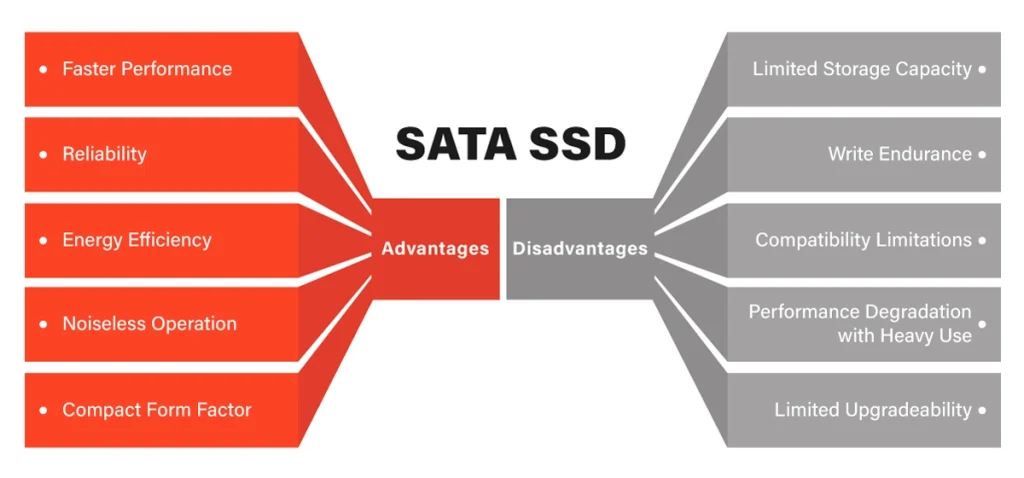
SATA SSDs store data within NAND flash memory chips, which consist of numerous memory cells capable of retaining data even during power downtime. When data is saved or retrieved, the SSD controller proficiently manages the reading and writing processes with these memory cells. This eradicates the mechanical delays associated with traditional hard drives, culminating in significantly enhanced read and write speeds.
Advantages of SATA SSDs
SATA SSDs offer a multitude of benefits over conventional hard drives (HDDs) and other SSD variants. Below, we outline some of the key advantages of SATA SSDs:
- Swift Performance: SATA SSDs exhibit markedly faster read and write speeds when compared to traditional HDDs. By eliminating moving components, data access becomes almost instantaneous, resulting in quicker boot times, accelerated application launches, and an overall more responsive system. This speed advantage is especially evident during tasks involving the retrieval or transfer of large files.
- Enhanced Reliability: SATA SSDs boast superior reliability over HDDs owing to the absence of moving parts. Unlike traditional hard drives, which rely on spinning disks and mechanical read/write heads that are susceptible to mechanical wear and tear, SATA SSDs employ solid-state technology. As a result, they demonstrate heightened resistance to shocks, vibrations, and physical impact. This increased durability renders SATA SSDs particularly well-suited for deployment in portable devices, such as laptops.
- Energy Efficiency: SATA SSDs exhibit heightened energy efficiency compared to traditional hard drives. This efficiency translates into reduced energy expenditure, resulting in lower utility bills and prolonged battery life for laptops and other portable devices. Moreover, the diminished power consumption of SATA SSDs contributes to minimal heat generation, thereby ensuring cooler system temperatures and potentially extending the lifespan of other computer components.
Form Factor and Compatibility: SATA SSDs are available in various form factors, with the 2.5-inch size being the most prevalent. This form factor renders SATA SSDs compatible with a wide array of desktops, laptops, and gaming consoles. Additionally, SATA SSDs can be utilised with adapters to fit into M.2 slots, presenting even greater flexibility concerning installation options.
Limitations of SATA SSDs
Despite the myriad advantages that SATA SSDs present, it is crucial to also take into account their limitations. Here are some of the primary disadvantages of SATA SSDs:
- Storage Capacity: SATA SSDs typically offer lower storage capacities in comparison to traditional hard drives, particularly when considering the cost per gigabyte. This constraint may necessitate users to be mindful of their storage requirements and manage space judiciously. Nevertheless, it is noteworthy that SSDs with larger capacities are progressively becoming more accessible and cost-effective.
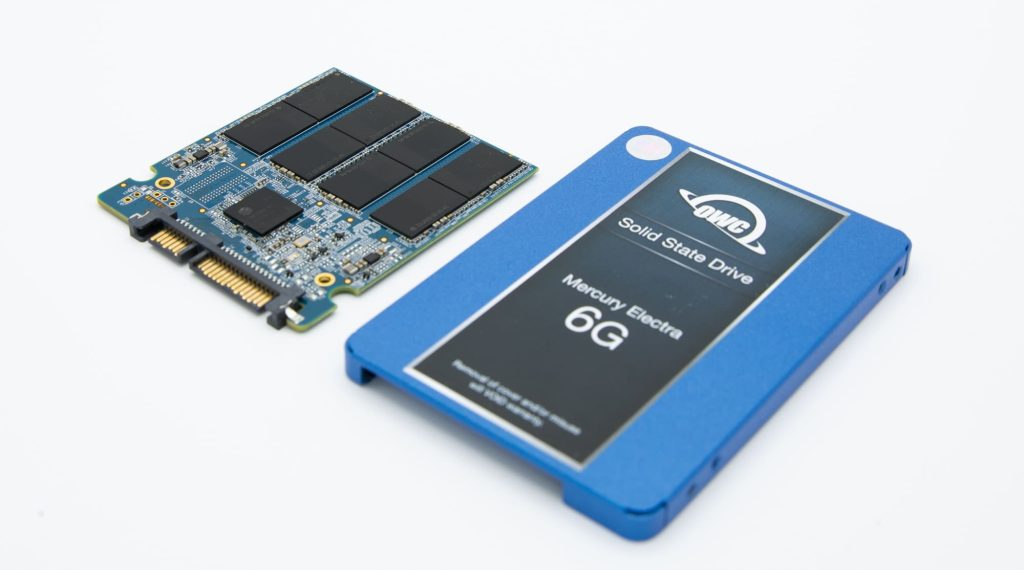
- Write Endurance: The longevity of each memory cell within an SSD is bound by a finite number of write cycles before its reliability diminishes. Despite the advancements in write endurance seen in modern SATA SSDs compared to their predecessors, this aspect remains a pertinent consideration for ensuring long-term durability. However, for the majority of users adhering to typical usage patterns, this is unlikely to pose a substantial concern, as contemporary SSDs boast extended lifespans and incorporate sophisticated wear-levelling algorithms that evenly distribute write operations across the drive.
- Limited Compatibility: While SATA SSDs demonstrate compatibility with most contemporary systems, they may not be suitable for older systems lacking SATA interfaces. Moreover, certain ultra-thin laptops or compact devices might lack the physical space to accommodate a 2.5-inch SATA SSD. In such instances, alternative form factors like M.2 SSDs or external SSDs may prove more fitting.
- Performance Saturation: SATA SSDs utilise the SATA interface, which possesses limited bandwidth when compared to newer interfaces such as NVMe (Non-Volatile Memory Express). Consequently, SATA SSDs may not achieve the same ultra-fast speeds as NVMe SSDs in certain high-performance scenarios, such as intensive gaming, video editing, or large-scale data processing. Nonetheless, for the majority of everyday computing tasks, the performance of SATA SSDs remains more than adequate.
Tips for Maximising SATA SSD Lifespan
To ensure the longevity and durability of your SATA SSD, consider the following recommendations:
1
Enable TRIM
Enable the TRIM feature on your operating system to maintain optimal SSD performance. TRIM informs the drive about unused data blocks that can be erased, preventing performance degradation over time and extending the SSD’s lifespan.
2
Avoid Excessive Writes
While modern SATA SSDs have improved write endurance, it remains essential to minimise unnecessary write operations to prevent premature wear.
3
Optimise Operating System Settings
Adjust your operating system settings to reduce unnecessary wear on your SATA SSD.
a. Disable hibernation: Hibernation involves writing the entire system state to the disk, resulting in frequent writes and unnecessary wear. Disabling hibernation can extend the SSD’s lifespan by reducing write operations.
b. Reduce virtual memory (pagefile) usage: Frequent read and write operations associated with virtual memory usage can impact the SSD’s longevity. Consider reducing its frequency or optimising it for a better SSD lifespan.
4
Manage Storage Space
Regularly assess and manage your storage space to prevent the SSD from reaching full capacity. Leaving around 10-20% of free space helps maintain performance and longevity. Delete unnecessary files, offload data to external storage, or use cloud solutions to free up space on your SATA SSD.
5
Maintain Proper Ventilation
Overheating can affect the performance and lifespan of your SATA SSD. Ensure your computer’s cooling system provides proper airflow within the case. High temperatures can accelerate wear on the SSD and potentially lead to data loss. Keep the SSD away from heat sources and direct sunlight.
6
Use a High-Quality Power Supply
A stable power supply is crucial for the smooth operation of any electronic device, including SATA SSDs. Utilise a high-quality power supply and surge protector to safeguard your SSD from voltage fluctuations and power surges that can cause damage. An unstable power supply can lead to data corruption or other issues impacting the SSD’s lifespan.
7
Regularly Update Firmware
Frequently check for firmware updates for your SATA SSD from the manufacturer. Firmware updates can enhance performance, reliability, and compatibility and may address potential bugs or issues affecting the SSD’s lifespan.
8
Perform Regular Data Backups
While the focus is on maximising the SSD’s lifespan, it is vital to prepare for the possibility of data loss. Regularly back up your important data to external storage, cloud services, or other reliable backup solutions. This ensures data remains safe and accessible even if the SSD were to fail.
Data Loss on SATA SSDs
Data loss represents a significant concern for any storage medium, including SATA SSDs. The inadvertent deletion of files, software-related issues, hardware malfunctions, or physical damage can result in the irrevocable loss of valuable data. Hence, it becomes paramount to implement a robust backup strategy to mitigate the risks associated with data loss.
- Hardware Failures: Despite the enhanced resilience of SATA SSDs compared to traditional hard drives, they remain susceptible to hardware failures. Components such as the controller, memory chips, or connectors can encounter faults, leading to data loss. These failures may arise from manufacturing defects, power surges, or physical damage inflicted upon the SSD.
- Power Outages and Voltage Fluctuations: Sudden power outages or fluctuations in voltage have the potential to disrupt the data writing process, leading to data corruption or loss on the SATA SSD. To minimise the risk of such events, it is crucial to maintain a dependable power supply and utilise surge protectors.
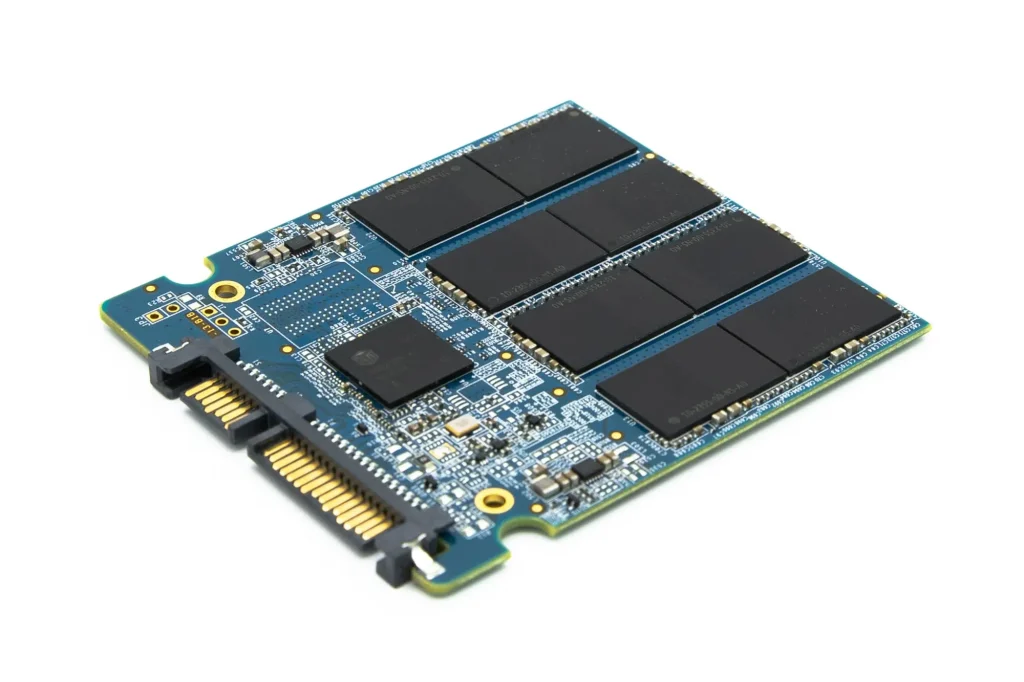
- Firmware Issues: The firmware, a vital embedded software within the SSD responsible for managing its operations, can encounter bugs or compatibility conflicts that may result in data loss or drive instability.
It is highly advisable to ensure the firmware of your SATA SSD is kept up to date, as manufacturers frequently release updates to address known issues and enhance performance.
- Software Corruption or Malware: Software-related problems, such as operating system errors, file system corruption, or malware infections, can also cause data loss on SATA SSDs. Corruption of critical system files or user data can render the files inaccessible or lead to complete data loss. To mitigate the risk of software-related data loss, it is essential to regularly update your operating system, employ reliable antivirus software, and practise safe computing habits.
- Human Errors: Data loss on SATA SSDs can arise from inadvertent actions such as accidental deletion, incorrect drive formatting, or mishandling of files. To avert such consequences, it is imperative to exercise caution and thoroughly verify all file management operations to prevent unintentional deletion or overwriting of critical data.
- Natural Disasters or Catastrophic Events: SATA SSDs are vulnerable to physical damage caused by natural disasters like floods, fires, or earthquakes, leading to potential data loss.
SATA SSDs offer a multitude of advantages over traditional hard drives, encompassing superior speed, reliability, and energy efficiency. By comprehending their strengths and weaknesses and adhering to the guidelines set forth in this blog post, you can optimise the lifespan and robustness of your SATA SSD.
Remember to enable TRIM, minimise excessive writes, optimise operating system settings, manage storage space, maintain adequate ventilation, and employ a high-quality power supply. By adopting these best practises, your SATA SSD will continue to deliver optimal performance for years to come.
It is crucial to acknowledge that while these tips can extend the lifespan of your SATA SSD, one must remain prepared for potential data loss. Implementing regular backups and ensuring access to professional data recovery services can offer additional reassurance and serve as a safety net in unforeseen circumstances.
SATA SSD Data Recovery with PITS
PITS Global Data Recovery Services guarantees meticulous handling of each storage device and boasts expertise in repairing and restoring files. Upon receiving the media at our facility, we conduct a comprehensive evaluation process to determine the probability of successful data recovery. Upon client approval, we proceed with the data retrieval procedure.
Advantages of Availing Our Services:
24/7 Emergency Service Availability
So if you're facing a data loss situation, don't hesitate to contact us. Our 24/7 data recovery services are available 365 days a year. Let us help you recover your precious data today.
Certified Data Recovery Laboratories
So if you're facing a data loss situation, look no further. With our certified data recovery labs and 99% success rate, we are confident that we can recover your precious data and get you back on track.
Data Recovery Services Worldwide
PITS is a leading global recovery service provider specialising in retrieving data from various storage devices. With a widespread network of locations, we offer reliable solutions to clients worldwide.
ISO Certified Class 10 Cleanroom
Our engineers work in a controlled environment to ensure the safety of your device. We recover data in ISO Certified Class 10 Cleanroom and achieve high results.
Risk-free Evaluation and Assessment
We start the process with a risk-free evaluation. Our technicians estimate the reasons for data loss and the level of damage. We select the most suitable strategy.
100% Customer Satisfaction Rate
With years in the data recovery industry, our company supports the highest customer satisfaction rate. We do everything to provide a positive experience for our clients.
Our team of experts utilises cutting-edge technologies and the latest tools to conduct the data restoration process. For devices exhibiting mechanical or physical damage, we operate within an ISO Certified Class 10 Cleanroom, ensuring zero risk of harm to your delicate equipment.
Furthermore, our engineers regularly undergo qualification courses, equipping them with the proficiency to address a wide range of malfunctions. With a proven track record of thousands of successful cases, we have successfully recovered files from various solid-state drives. Achieving this feat is attributed to our employment of advanced techniques and top-tier recovery methods.
Frequently Asked Questions
What is a SATA SSD, and how does it differ from traditional hard drives?
A SATA SSD (Solid State Drive) is a storage device that utilizes flash memory to store data. In contrast to traditional hard drives with spinning disks, SSDs have no moving parts, resulting in enhanced speed, durability, and energy efficiency.
How do I install a SATA SSD on my computer?
To install a SATA SSD, you need to open your computer’s case, locate an available SATA port on the motherboard, and connect the SSD to it using a SATA data cable. Additionally, you will need to link the SSD to the power supply through a SATA power cable. Upon completing the physical installation, you may have to initialise and format the SSD within your computer’s operating system before utilising it.
Can I replace my existing hard drive with a SATA SSD?
Certainly, you can replace your current hard drive with a SATA SSD. This upgrade can notably enhance your computer’s performance, offering faster boot times, quicker application loading, and smoother overall operation. However, you will need to transfer your data from the old hard drive to the new SSD or perform a fresh installation of your operating system and applications.
Are SATA SSDs compatible with all computers?
SATA SSDs are compatible with most modern computers equipped with SATA ports. Nonetheless, it is essential to verify that your computer’s motherboard supports SATA connections and that you have an available SATA port for SSD connectivity. Furthermore, ascertain if your computer’s operating system supports SSDs and whether any firmware or driver updates are necessary.
What are the advantages of using a SATA SSD?
Employing a SATA SSD offers numerous benefits over traditional hard drives. These include faster data access and transfer speeds, heightened system responsiveness, reduced power consumption, silent operation (absence of noise from moving parts), and increased durability due to the absence of mechanical components. SATA SSDs also exhibit greater resistance to shock and vibration, rendering them ideal for portable devices such as laptops.
We’re Here to Help
Our experienced team is committed to helping you recover your critical data. No matter the situation, we work diligently to ensure the best possible outcome. Take action now and let us restore what’s important to you.
Start Recovery Process
"*" indicates required fields
